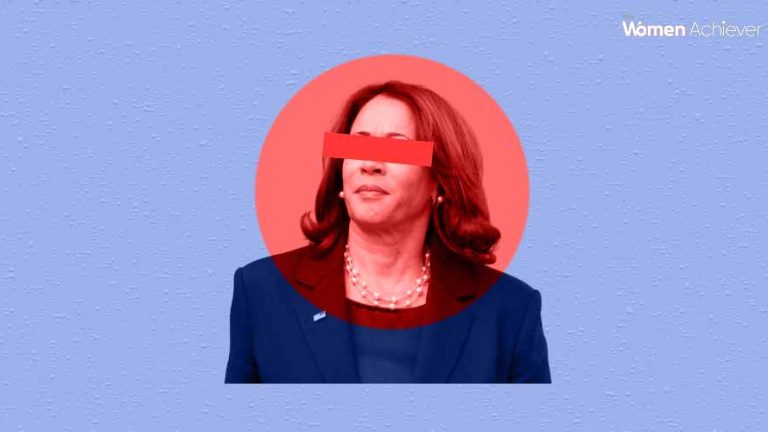Kamala Harris struggled to establish herself as an independent leader distinct from President Biden
Kamala Harris, the 2024 Democratic nominee, faced several obstacles during her campaign for the presidency. Her loss in the election was influenced by multiple factors, including political missteps, leadership challenges, and voter sentiment shaped by her association with the Biden administration. The presence of Donald Trump as a formidable opponent also played a significant role in determining the outcome of the US elections.
1. Public Perception of Leadership
Kamala Harris struggled to establish herself as an independent leader distinct from President Biden. During her campaign, she frequently emphasized her role as the last person in the room for key decisions during Biden’s presidency. This statement created challenges, as many voters associated her directly with unpopular decisions made during his administration.
For instance, her response during a televised interview where she stated that she would not have done anything differently than Biden on critical issues like the Afghanistan withdrawal or the response to the Ukraine war raised questions about her leadership vision. This lack of differentiation hurt her ability to project herself as a leader with unique solutions for pressing issues.
2. Biden’s Low Approval Rating
The declining approval ratings of President Biden had a direct impact on Harris’ campaign. A CNN Poll of Polls showed Biden’s approval at 38%, with a disapproval rating of 57%. This reflected widespread dissatisfaction with his administration’s handling of domestic and international issues.
As a candidate closely tied to Biden, Harris struggled to escape the shadow of his presidency. Her campaign’s messaging that she was “not Biden” failed to convince voters who were already dissatisfied with the administration’s performance. Biden’s unpopularity in key swing states further hindered her chances of building a broad coalition of support.
3. Voter Distrust of Institutions
Voter distrust of major institutions also affected Harris’ campaign. During the Vice Presidential debate, Tim Walz, Harris’ running mate, openly stated his reliance on “experts” to address critical issues. While this approach may resonate with certain voter segments, it clashed with the broader sentiment of distrust in institutions.
A Gallup poll highlighted that only 28% of Americans expressed confidence in major U.S. institutions. Harris’ campaign failed to address this distrust effectively, leaving many voters unconvinced about the Democratic ticket’s ability to bring meaningful change. Meanwhile, JD Vance, Trump’s running mate, capitalized on this distrust by criticizing economic experts and promoting policies aligned with public skepticism.
4. Donald Trump’s Political Influence
Donald Trump’s candidacy for the Republican Party energized his voter base and presented a significant challenge for Harris. Trump’s ability to connect with disenchanted voters and frame the election as a referendum on the Biden administration’s policies resonated with a large segment of the electorate.
Trump’s campaign also focused on economic issues and national security concerns, which drew attention to perceived weaknesses in Harris’ leadership. His running mate, JD Vance, effectively communicated alternative solutions, contrasting sharply with the Democratic ticket’s message. The presence of Trump as a strong opponent made it harder for Harris to secure undecided voters.
5. Biden’s Controversial Comments
Another pivotal moment during the campaign was President Biden’s controversial remark referring to Trump supporters as “garbage.” This statement alienated not only Republican voters but also Democrats and Independents who had supported Trump in previous elections.
As Harris struggled to distance herself from Biden, his comments further fueled opposition to her candidacy. Insulting a significant portion of the electorate was seen as a critical misstep, amplifying the challenges faced by the Democratic campaign.
6. Challenges with Policy Messaging
Harris’ campaign faced difficulties in clearly communicating her policy agenda. While she highlighted her achievements as a senator and vice president, her lack of specificity on addressing critical issues such as the border crisis, inflation, and foreign policy left voters uncertain about her leadership approach.
The inability to provide clear solutions on these pressing issues contrasted with Trump’s messaging, which focused on economic recovery and national security. This difference in communication styles contributed to Harris’ inability to sway undecided voters.
7. Historical Voter Trends
Historical voting patterns in the US also played a role in Harris’ loss. Swing states with significant influence in the Electoral College leaned toward Republican candidates due to dissatisfaction with the current administration. The ability of Trump’s campaign to mobilize voters in these key states highlighted the challenges faced by Harris in building a winning coalition.
8. Media and Public Perception
Harris’ interactions with the media also influenced public perception. Her appearance on popular platforms such as The View revealed gaps in her messaging strategy. For instance, her statement that she would not have approached any major decision differently than Biden drew criticism and raised questions about her ability to lead independently.
The media coverage of these moments amplified voter concerns, shaping the narrative around her campaign in ways that worked to her disadvantage.
9. Leadership Challenges
As a leader, Harris faced the dual challenge of highlighting her accomplishments while addressing voter concerns about the Biden administration. Her achievements, such as serving as attorney general and senator of California, reflected her experience and dedication. However, these accomplishments were overshadowed by her close association with the current administration’s shortcomings.
Voters questioned her ability to navigate complex challenges independently, particularly in areas like foreign policy and economic reform. The lack of a compelling leadership vision distinct from Biden further weakened her campaign.
10. Republican Party Strategy
The Republican Party’s cohesive strategy under Donald Trump also played a significant role in Harris’ loss. By focusing on economic recovery, immigration reform, and national security, the Republican campaign effectively addressed voter priorities.
The selection of JD Vance as Trump’s running mate added further credibility to the Republican ticket, particularly on issues related to economic policy. The ability to connect with disenchanted voters and present clear solutions gave the Republican Party a strategic advantage over the Democratic campaign.
Conclusion
Kamala Harris’ loss in the 2024 US elections was shaped by a combination of political, leadership, and strategic factors. Her close association with the Biden administration, challenges in differentiating her leadership style, and the influence of Donald Trump as a strong opponent significantly impacted voter sentiment.
Despite her extensive experience and accomplishments, Harris faced obstacles in addressing voter concerns and communicating a clear vision for the future. The outcome of the election highlights the importance of effective messaging, voter trust, and leadership distinctiveness in shaping electoral success.






Add comment